Memcoins: How a "Joke" Turns into Millions

Memcoins: How a "Joke" Turns into Millions
Why Funny Coins Are Worth Millions and Destroying the Market
Memcoins, from Dogecoin to MOTHER, are turning internet jokes into hundreds of millions of dollars in market capitalization. Amid growing interest in altcoins and celebrity tokens, the memecoin market has surpassed $100 billion, but experts warn that behind the fun logos lies high volatility, manipulation, and the risk of losing your investment.Memcoins: A Digital Madness Phenomenon
Memcoins are cryptocurrencies created without a serious economic basis, but riding a wave of internet hype. Their strength lies in their virality. They appear on social media, are picked up by influencers, and instantly become the subject of speculation.While traditional cryptocurrencies are built on the ideas of decentralization and technological progress, memecoins thrive on a culture of instant reactions.
As Elon Musk put it:
"Sometimes memes mean more than words. And Dogecoin is the people's crypto."
Dogecoin was the first joke to become the symbol of an entire trend. Launched in 2013 as a parody, it has survived dozens of crypto winters and entered the top 10 by market capitalization.

Memcoins: How a "Joke" Turns into Millions
Examples of resounding successes
2024–2025 will be the peak of the new wave of memecoins.Mother Iggy (MOTHER) , a token created by singer Iggy Azalea, reached a market capitalization of $240 million in a week .
TRUMP Coin is a politically charged meme coin that rose to $75 but has more than quadrupled since the election.
PEPE , inspired by a frog meme, made millions for early investors in just a few days in 2023.
According to CoinGecko , the total memecoin market size has exceeded $100 billion , and the number of new tokens on the Ethereum and Solana networks is growing exponentially - 5,000+ new coins per week.
Risks that are not usually discussed
The problem is that most memecoins have no product, no team, and no transparent tokenomics. Their value rests solely on the attention of their audience.TRUMP Coin example:
$75 at its peak, $16 a month later. Investor losses: around $2 billion .
Winners? The project's creators and marketers, who earned over $100 million in fees and token sales during the peak.
"The memecoin market isn't an investment, it's a crowd-psychology arena. It's the early adopters who profit, not the believers,"
says Bitwise analyst Alex Low.
Memcoins as a tool of manipulation
Memcoins are often used for money laundering or pump-and-dump schemes.In 2025, the scandal surrounding the $Libra token , promoted in Latin America, became an indicator of the scale of the problem: the project promised a 300% return but turned out to be a scam, causing the Solana market to plummet by 8% in a single day.
Such incidents damage trust in the industry. However, paradoxically, each scandal generates a new wave of interest—the greater the risk, the greater the excitement.
How Big Players Profit
Institutional funds and professional traders have already adapted.They use algorithmic models and blockchain scanners to identify promising memecoins in their early stages , when the token is just beginning to gain an audience on X (formerly Twitter) or Telegram.
Some hedge funds create their own memecoins, using them as a viral marketing tool: first hype, then liquidity, then an exit at the peak of interest.
Memcoin Geography: From the US to Asia
Interest in memecoins is highest in the US, South Korea, Japan, and Turkey.In Asia, they're part of youth crypto culture—a token with a cat can become a community symbol faster than a new altcoin with a white paper.
In the US, memecoins are an element of financial rebellion: a play against traditional funds and "serious" investors.
Is it possible to make money on memecoins?
Yes, but only if you understand that this is a zero-sum game.Success depends not on technology, but on the speed of reaction.
Traders who are early to enter and early to exit a project can indeed make tens of thousands of dollars. However, according to IntoTheBlock
statistics , approximately 85% of retail memecoin investors lose money when buying the asset after its peak popularity.
Memcoins and the Future of Cryptoeconomics
Despite their volatility, memecoins are shaping a new economy— the attention economy.This is a market where value is created not by algorithms, but by emotions, memes, and viral content.
And while most projects are doomed to short life, they are the ones that set trends and attract a young audience to the crypto industry.
Bitcoin and Ethereum will remain the foundation, but it is memecoins that are bringing crypto to the masses.
Conclusion
Memcoins are the digital equivalent of a lottery, where millions buy tickets and only a few win.
But, like any lottery, they reflect human nature—the thirst for easy money, a belief in luck, and a love of the absurd.
As long as people believe they can "catch the wave," memecoins will exist.
And perhaps one day, the latest joke will once again become a billion-dollar asset.
"Memecoins aren't currencies, they're a mirror of society. They show how capitalized humor itself is," notes economist Joshua Tan of the CryptoPolicy Institute.
By Miles Harrington
October 22, 2025
Join us. Our Telegram: @forexturnkey
All to the point, no ads. A channel that doesn't tire you out, but pumps you up.


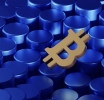
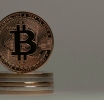
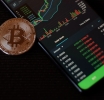

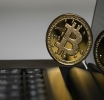
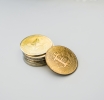

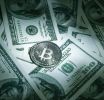



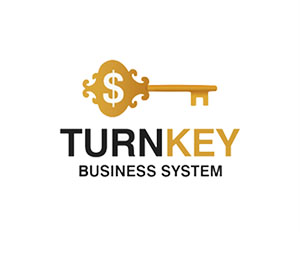
Report
My comments